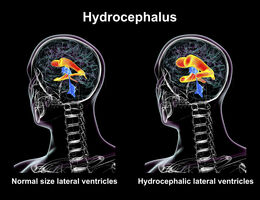

November is National Epilepsy Awareness Month
When a person experiences two or more unprovoked seizures, they are diagnosed with epilepsy, a neurological condition that affects millions nationwide.
Epilepsy means that a person is at an increased risk of having seizures in the future. The U.S. Centers for Disease Control and Prevention (CDC) reports that about 2.9 million U.S. adults 18 and older reported having active epilepsy. That is about 1% of all U.S. adults. Furthermore, among those taking epilepsy medication, only 44% reported having their seizures controlled.
“You don’t have to have another underlying neurological problem to have seizures,” says Joshua Loeb, MD, a pediatric epilepsy specialist. “It’s a clinical diagnosis that determines epilepsy.”
Epilepsy can affect any person regardless of age, gender, race, or ethnic background. It can also significantly reduce a person's quality of life, with the CDC reporting an increased risk of death in individuals with drug-resistant epilepsy.
While the unknowns of when another seizure will strike can cause fear for individuals and their loved ones, modern epilepsy treatment offers plenty of hope.
Testing for epilepsy
Once a person has a seizure, the first step is to undergo an electroencephalogram (EEG), a non-invasive study that measures brain-wave activity through electrodes placed on the scalp. An EEG can help determine whether seizures are generalized or focal:
-
Generalized seizures: coming from the whole brain at once
-
Focal seizures: coming from one part of the brain
In addition to an EEG, many patients undergo an MRI to check for abnormalities in the structure of the brain, which can explain why someone had a seizure.
Finally, especially in children, it's also common to test for genetic abnormalities to see if seizures are caused by genetic epilepsies.
Treating epilepsy
Once it’s determined that someone has epilepsy, treatment begins with medications. The initial goal is always no seizures, no side effects.
“Fortunately, about two-thirds of people achieve seizure control with medication alone,” Loeb says. “50% of people will be seizure free on their first anti-seizure medication, about 15% will be seizure free with a second medication, and another 5% with three or more medications.”
For those who go seizure-free for two years, they can start to wean off medication. If they have a normal EEG, MRI, and normal development, Loeb says the likelihood of staying seizure-free is 80%.
For those with an abnormal EEG, MRI, or developmental delay, their likelihood of staying seizure-free is around 50%, though they are still given the opportunity to try and come off medication. If a person comes off their medication and the seizures return, they will more likely need lifelong treatment.

When seizure medication isn’t enough
For those whose seizures remain uncontrolled, there are additional treatment options beyond medication:
Surgery
For people who experience seizures that come from one part of the brain, epilepsy surgery can be an option. If the seizures originate from an area of the brain that is safe to remove, the surgery consists of removing the impacted part of the brain to potentially cure epilepsy. The following are all options of surgery:
Neuromodulation
A different way of approaching seizure treatment involves implantable devices that send electrical impulses to the brain or nerves to reduce seizure activity.
Deep brain stimulation (DBS): DBS is an FDA-approved method to treat epilepsy by implanting electrodes into specific regions of the brain. Signals from DBS send regular electrical impulses to the target site. DBS is also sometimes used in movement disorders, including dystonia, essential tremor, and Parkinson's disease, though the location in the brain where it is implanted is different.
Responsive nerve stimulation (RNS)
When epilepsy surgery is not an option for a patient due to the seizure type or safety concerns, Loeb says RNS can be effective. The RNS device, which is placed in or on the region of the brain where seizures occur, can detect seizure activity in real time and deliver targeted electrical pulses to stop seizures before they spread and cause symptoms.
Vagal nerve stimulator (VNS)
VNS, is implanted under the chest and connects to the vagus nerve in the neck to send pulses of electricity at regular intervals.
Dietary Therapy
Some patients, especially children, benefit from a high-fat, low-protein, low-carbohydrate diet, such as the ketogenic diet. Studies from the Seizure European Journal of Epilepsy found that the keto diet can significantly reduce seizures in about 40% - 67% of pediatric patients.
Hope for the future
While some may never experience an epilepsy-free life, Loeb says many families find hope in smaller victories.
“I have patients who still have a couple of seizures a month, but tell me, ‘This is the best we’ve ever been,’” Loeb says. “It’s about finding what treatment success looks like for that family and helping them get there.”
Even when seizures don’t completely go away, the combination of medical advancements, new technology, and individualized care gives families reason to hope.
For more information on epilepsy, visit our website here.



